Wheelgun Wednesday: Horace Smith's Engraved S&W Revolver

Want to buy a classic Smith & Wesson? Something way older than an original K-frame, even older than the Schofield. Why not a customized Model 1 ½, as ordered and owned by Horace Smith, aka the “Smith” in Smith & Wesson? Thanks to the Rock Island Auction Company, you will have your chance to do that next month.
Smith & Wesson Wheelguns @ TFB:
History lesson time!
The Smith & Wesson Model 1 ½ did not serve with distinction in World Wars or the Cold War. It was not the high-powered hand-cannon of choice for any fictional detective. It did not even serve in the Civil War, as it was introduced in 1865, only weeks after that conflict ended. But it might be the most important revolver in the company’s history, because it helped them survive the drop in sales that came after the Civil War, when other companies went bust, and it set a solid foundation for the company to prosper for generations to come.
The Model 1 ½ was successful because it was one of the earliest handguns to use self-contained metallic cartridges. Smith & Wesson’s Model 1 was chambered in .22 Short and saw lots of use in the Civil War; the Model 1 ½ was built along basically the same design. The revolver was a single-action design, with the shooter cocking the hammer for each shot. When it was time to reload, the barrel tipped up from the front of the cylinder for reloading (in early variations). It’s an awkward procedure, with a button on the side of the frame, ahead of the trigger, unlocking the barrel. Once that’s flipped up, you can remove the cylinder to eject empties and load with fresh cartridges. See it demonstrated below.
The Model 1 ½ was first chambered in .32 rimfire short, which gave it more hitting power than the earlier .22—still not a powerhouse by today’s standards, but an upgrade over its predecessor, and much easier to deal with than the cap-and-ball revolvers of its time. A Colt Dragoon had more hitting power, but percussion revolvers had to be treated with more care. Smith & Wesson sold truckloads of these things—errrr, make that Conestoga wagon loads. As settlers pushed west, they brought these revolvers as hideout pieces, making the first-generation version of this handgun 1865-1868, building about 26,000 of them in that time.
From there, they built a second-generation version of the Model 1 ½, then a third-generation, for more than 200,000 examples in total. There were slight variations, and later versions were chambered in the centerfire .32 S&W cartridge, but the first two generations were basically the same thing, while the third-generation revolver had a more modern break-open design, reloading from the rear of the cylinder.
This pistol here
This revolver is one of the earliest production examples. We know that because it has excellent provenance—it was ordered by Horace Smith, one of the co-founders of the company, along with Daniel B. Wesson. He bought two revolvers in 1866, specced with 4-inch barrels (a special order at that time, says Rock Island Auction Company), and with engraving by F.W. Martin, the first full-time engraver at S&W.
Supposedly, this is the only known example of an engraved Model 1 ½ with a 4-inch barrel. Rock Island Auction Company describes the work this way:
“F.W. Martin’s factory engraving consists of broad scrollwork on stippled background, along with scattered cross hatching and blossom patterns. The engraving is highly unusual for its panel scene on the cylinder. This scene features a standing fox dressed in a pantaloons hunting outfit complete with a festooned hat and holding a pistol on a surrendering rabbit. The barrel and frame are plated in silver. The cylinder is plated in gold. The revolver wears a set of highly attractive pearl grips. The left grip panel is hand numbered to the gun. Matching assembly numbers appear on the grip frame, cylinder, and barrel.”
Most of that fine work is still in good shape, says the auction house, but the revolver needs some mechanical tweaking to function as good as new.
The matching box was made by Frank Klay of Klay Associates—it is not original. Klay had to build this case as a custom design, as there are no known factory S&W cases for Model 1 ½ revolvers with a 4-inch barrel. Klay used a period-correct case for a Model 1 ½ with a 3.5-inch barrel (the most common configuration) as a base for his design. The case has 28 rounds included and a cleaning rod.
After Horace Smith bought this piece, the revolver worked its way through a series of collectors. Here’s how Rock Island Auction Company describes its series of owners:
“Ownership of this historic piece of S&W history is as follows. No. 15655 was given by Horace Smith to Edward Hall who in turn gave it to his brother Charles of Ashfield, Massachusetts. After his death in 1931, Charles’ firearms collection was received by his nephew Addison S. Hall. This particular S&W ended up in the hands of Addison’s dentist, Dr. Elbert Stallard. Arnold Mills, a patient of Dr. Stallard, later purchased the revolver with receipt included, and in 1985, also purchased Charles Hall’s collection ledger from the Hall estate, bringing the revolver and ledger together once again. Charles’ ledger described receiving no. 15655 and the Hall family association with Horace Smith. The revolver is number 44 in the ledger. The notation is as follows: ‘Ed gave me the very handsome pearl handle silver plated .32 cal. Smith and Wesson revolver of a very early pattern. Mr. Horace Smith of Smith and Wesson was a very good friend of ours. Papa and Mama used to visit them and they, Mr. & Mrs. Smith, came up to see us and stay few days. They were very nice people.’ Charles further wrote that his father and Horace Smith traded in horses.”
The auction listing (see it here) shows documents that back up this history lesson.
If you want this revolver, you can bid on it at Rock Island’s auction on May 3 in Bedford, Texas. They’re estimating a sale price of $15,000-$25,000 USD, which is a lot of coin for an old .32 rimfire revolver. However, the combination of one-of-a-kind factory customization along with the ownership by the company’s co-founder himself means it will command a pretty penny by the time the gavel falls.
All photos: Rock Island Auction Company

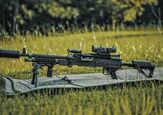
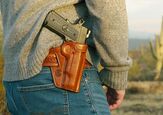
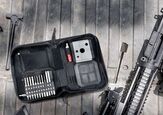






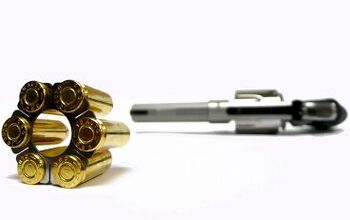

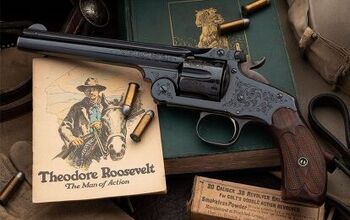







![[SHOT 2025] Hornady's New High-Volume Brass Trimmer](https://cdn-fastly.thefirearmblog.com/media/2025/01/26/17383/shot-2025-hornady-s-new-high-volume-brass-trimmer.jpg?size=350x220)



![[SHOT 2025] Kudu Turns Any Bolt-Action Into A Straight-Pull](https://cdn-fastly.thefirearmblog.com/media/2025/01/25/03071/shot-2025-kudu-turns-any-bolt-action-into-a-straight-pull.jpg?size=350x220)


Comments
Join the conversation